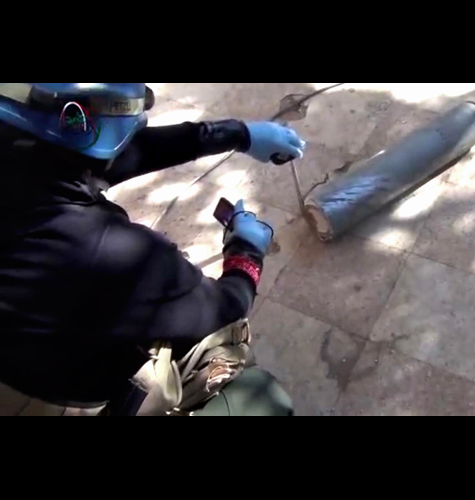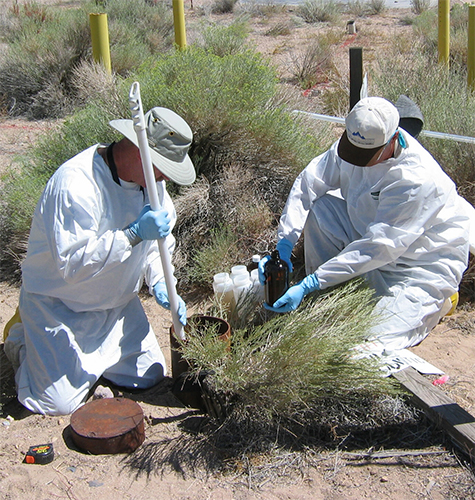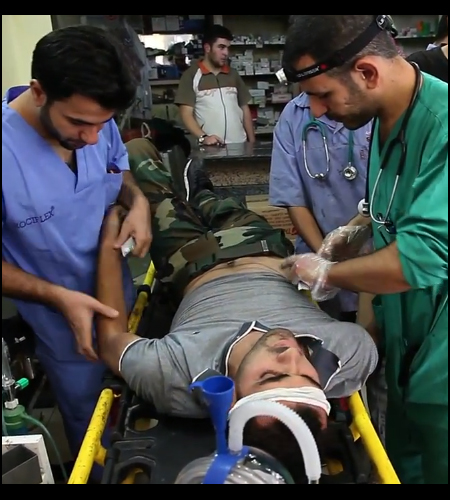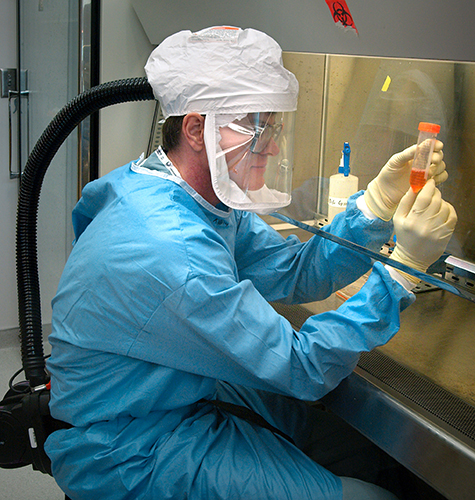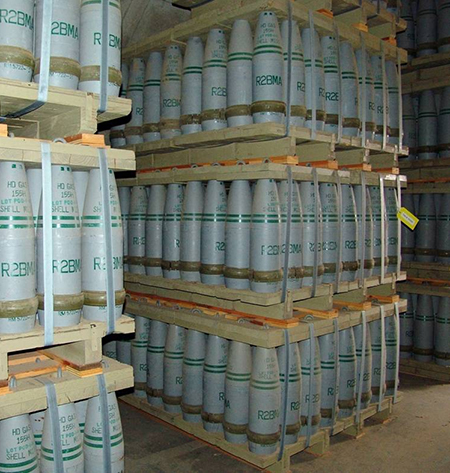How do chemical safety and security differ?
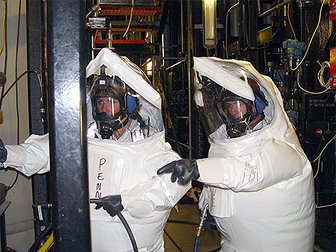
Two workers in the U.S. Army Newport Chemical Depot,
U.S. Army via WikiMedia Commons
Chemical safety and chemical security planning are often integrated in the same programs but have key differences.
- Chemical safety is focused on preventing chemical accidents that could cause harm to people or to the environment.
- Chemical security measures focus on preventing the misuse of chemicals or chemical infrastructure, including:
- malicious attacks on chemical plants or infrastructure by terrorists or other actors
- theft or illicit transfer of hazardous chemicals
- deliberate chemical contamination
What role do governments play in chemical security?
Governments:
- Set and enforce rules for private sector use of chemicals;
- Coordinate emergency preparedness and response plans for potential chemical security incidents;
- Partner with industry to establish and promote chemical security best practices; and
- Work to create an even playing field for chemical companies so that the costs to industry of implementing chemical security regulations are not disproportionately borne.
Passing and Enforcing Laws
Establish the legal and regulatory framework for chemical security, including laws and regulations to:
- Prevent and establish penalties for misuse of chemicals
- Set minimum physical security standards to minimize chemical infrastructure vulnerabilities
- Establish and empower agencies with regulatory oversight of chemical security (e.g., in the United States, the lead agency for chemical security is the Department of Homeland Security)
Emergency Preparedness and Response
Establish and oversee preparedness and response plans for chemical incidents.
In the United States, the Federal Emergency Management Agency within the Department of Homeland Security takes the lead preparing for and responding to chemical incidents.
Industry Outreach
Facilitate industry engagement and the sharing of best practices for chemical security.
In the United States, the Department of Homeland Security sets standards for security through the Chemical Facility Anti-Terrorism Standards (CFATS). CFATS offers presentations and compliance assistance visits to ensure proper security measures are in place. [1]
What is industry’s role in chemical security?
As the stakeholders who produce, use, and trade in chemicals, industry is the first line of defense against attacks on chemical facilities, theft or illicit transfer of toxic chemicals, and other chemical security threats. Industry possesses much of the relevant expertise on establishing chemical security best practices and is ultimately responsible for their implementation, making public-private partnerships in chemical security important.
Industry often spearheads educational campaigns about chemical security. The following are two notable initiatives that promote chemical security:
- The International Union of Pure and Applied Chemistry (IUPAC) is a professional organization that seeks to advance the chemical sciences. As part of its mission, the organization is dedicated to promoting the responsible use of chemistry and seeks to educate its members about misuse.
- Responsible Care®, managed by the International Council of Chemical Associations (ICCA), is a voluntary initiative of the global chemical industry focused on continuously improving the health, safety and environmental performance of the chemical industry. Responsible Care® includes a code on security practices to assist companies in improving chemical security at private facilities.
How can countries improve their preparedness and response capabilities for an attack or incident?
Countries can improve their preparedness and response capabilities for a chemical attack or incident by:
 |
Liaising with local and community stakeholders about preparedness and response protocols |
 |
Increasing education and outreach activities to their populations about how to prepare for chemical attacks or incidents |
 |
Investing in new technologies to improve physical security measures for chemical facilities and transport of chemicals |
 |
Improving detection equipment and processes for analyzing a chemical event |
 |
Holding exercises focused on mock chemical incidents to evaluate preparedness and response protocols |
How can authorities determine whether a chemical weapons attack has occurred?
Sources
[1] Stephen E. Flynn, “Ending the Post 9/11 Security Neglect of America’s Chemical Facilities,” Congressional Testimony, April 27, 2005, http://www.cfr.org/preparedness/ending-post-911-security-neglect-americas-chemical-facilities/p8041.
Photo Credit
Header Image: Mustard gas shells in a U.S. chemical weapons storage facility. Source: U.S. Army via WikiMedia Commons.
